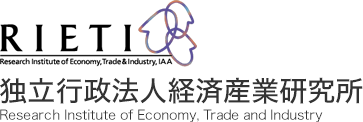| 執筆者 | 近藤 恵介(上席研究員) |
|---|---|
| 発行日/NO. | 2025年7月 25-E-069 |
| 研究プロジェクト | 地方創生のためのエビデンスに基づく政策形成 |
| ダウンロード/関連リンク |
概要
本研究では、地域メッシュ統計を用いて、居住者と就業者の違いを区別した密度の経済による賃金プレミアムの実証分析を行う。密度の経済では、居住者と就業者の集積が混在したまま議論されることが多く、コンパクトシティ政策と産業立地政策の両者を結びつけるような重要な政策的示唆を導き出すことが困難であった。日本の人口減少が進むなか、居住地としての魅力が低下したとしても、依然として企業誘致の観点からは潜在的に魅力の高い地域も存在する。しかし、政策議論が過度に居住としてのみに焦点を当てる場合、産業クラスターの活性化における地域の潜在性が軽視される可能性がある。このギャップを埋めるため、本研究は製造業事業所データと、居住者および労働者の地域メッシュ統計を統合したデータセットを用いた統計分析を行った。分析の結果、製造業の賃金プレミアムの主な要因は、人口集積ではなく、局所的な雇用集積であることがわかった。これは、居住の観点からのみ進めるコンパクトシティ政策だけでは地方創生を達成することは不十分であり、同時に、高賃金で魅力的な雇用創出のためには局所的な雇用集積につながる産業立地政策が重要な役割を果たす可能性を示唆する。
概要(英語)
This study utilizes micro-geographic data to examine wage premiums across different residential and employment agglomerations. In the existing literature on economies of density, the distinction between residents and workers is often addressed without a clear differentiation between the two. This oversight hinders the formulation of practical policy recommendations for compact urban planning and industrial location strategies. Amid Japan’s ongoing population decline, certain regions retain the capacity to attract industrial activity despite their waning appeal as residential areas. However, when policy discussions focus exclusively on residential agglomeration, regions with substantial potential to revitalize local industrial clusters may be overlooked. To bridge this gap, the study integrates manufacturing establishment data with regional mesh data on both residents and workers. This study finds that employment concentration, rather than residential concentration within compact geographic areas accounts for wage premiums, thereby highlighting the critical role of spatial locality of employment in shaping industrial location strategies.

